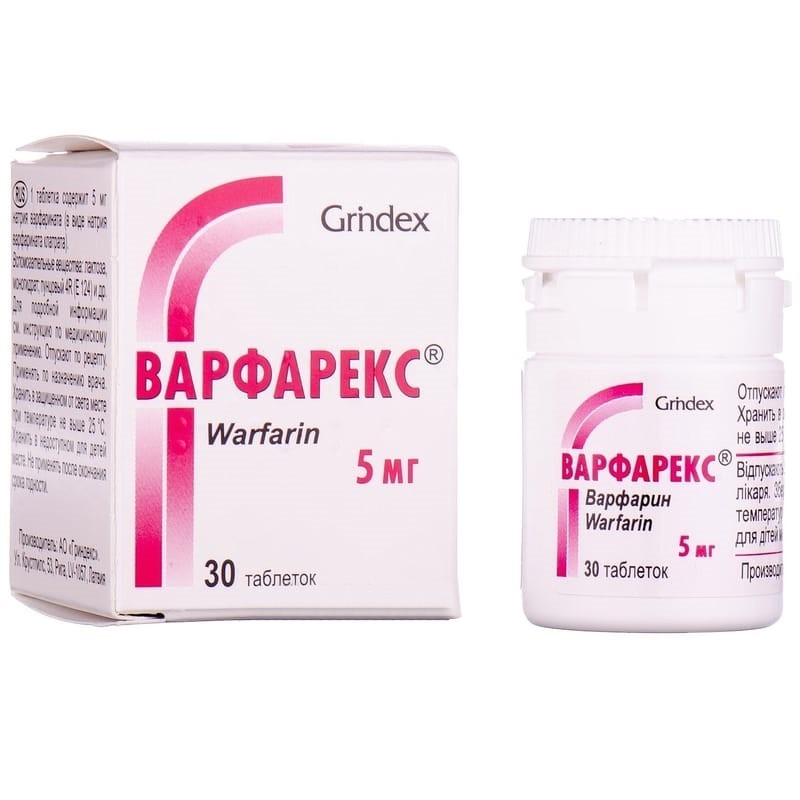



 Secure and encrypted payment processing
Secure and encrypted payment processing We ship to over 40 countries including the USA, UK, Europe, Australia and Japan
We ship to over 40 countries including the USA, UK, Europe, Australia and Japan Guaranteed refund or reship if you haven't received your order
Guaranteed refund or reship if you haven't received your orderWarfarex tablets are indicated for:
Active substance: warfarin;
1 tablet contains 5 mg of sodium warfarinate (in the form of sodium warfarinate clathrate);
Excipients: lactose, monohydrate; microcrystalline cellulose; crospovidone; magnesium stearate; indigo carmine (E 132) (for 3 mg tablets) and crimson 4R (E 124) (for 5 mg tablets).
Warfarex must be used at the same time.
The dose of Warfarex is determined by the doctor for each patient individually, guided by the INR indicators of prothrombin.
The range of targeted INR in oral anticoagulant therapy.
Prevention of thromboembolic complications in patients with prosthetic heart valves: INR - 2.5–3.5. Other indications: INR - 2.0–3.0.
Contraindicated.
Anticoagulant therapy in children should be carried out as directed and under the supervision of pediatricians.
Does not affect.
Symptoms: bleeding, bleeding.
Treatment: in mild cases with a gradual overdose, a dose reduction or discontinuation of warfarin treatment is usually sufficient until the INR returns to the target level. In acute drug overdoses, gastric emptying is not recommended due to the risk of bleeding. Activated carbon should be reused to avoid absorption and enterohepatic recycling of warfarin. When using activated carbon parenterally (iv), vitamin K should be administered. If bleeding develops, warfarin should be discontinued using vitamin K (5–10 mg intravenously), coagulation factor concentrate, or fresh frozen plasma. If further anticoagulation is necessary, the use of vitamin K in a dose of more than 10 mg should be avoided. Otherwise, the patient may be resistant to warfarin therapy for 2 weeks.
Fibrinolytics, such as streptokinase and alteplase, are contraindicated in patients taking warfarin.
It is necessary to avoid the simultaneous use of warfarin or to use with caution under close clinical and laboratory control with thrombin inhibitors, unfractionated heparins and their derivatives, low molecular weight heparin, fondaparin, rivaroxaban, glycoprotein IIb / IIIa receptor antagonists, prostamocitonin inhibitor, prostaratsiklin,.
Excessive alcohol consumption against the background of liver failure potentiates the effect of warfarin. The quinine contained in Tonic water can also cause an increase in the effect of warfarin.
Store in a dark place at a temperature not exceeding 25 ° C.
Keep out of the reach of children.
Shelf life is 5 years.